
1. Fifth Pick of the Litter2. Growing Up
3. Competition
4. In the Mountains
5. On the Beach
6. Buffy
7. Old Age

According to Wikipedia, the average lifespan of Belgian shepherds in the United States is 10.6 years. At that age, Chip was still going strong.
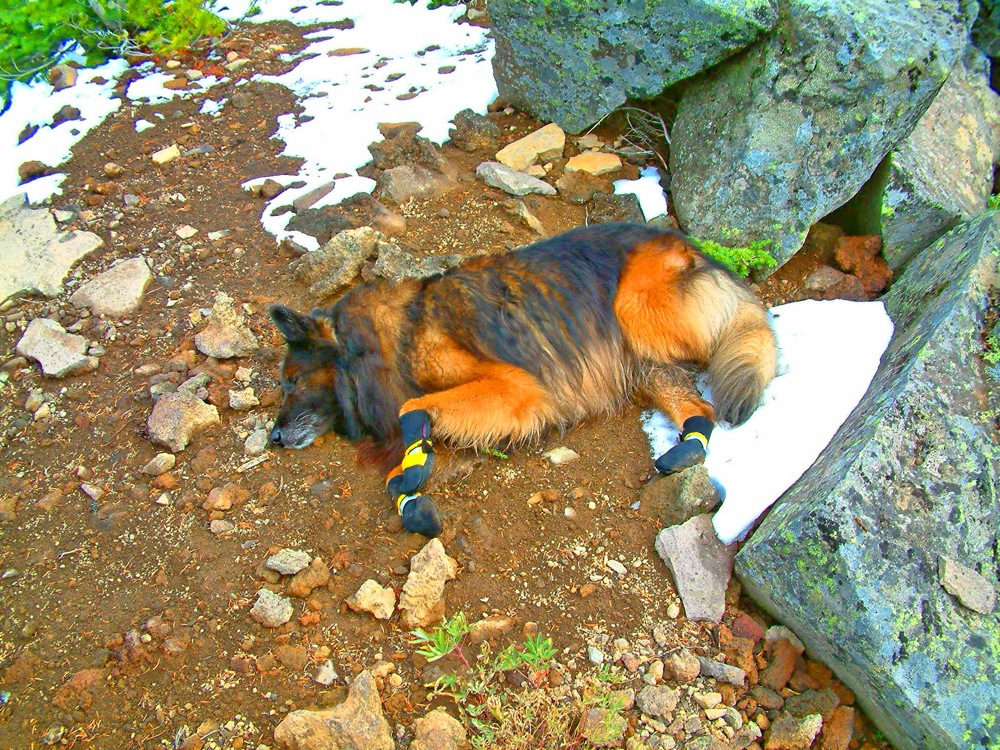
I noticed he slowed down a bit when he was 12--nearly 80 in dog years (supposedly, for a dog his size, there are 6.5 dog years per year). When I broke for lunch on a 15-mile hike in the Mt. Jefferson Wilderness, instead of pestering me to get going again, he flopped down and took a nap. Still, we continued our three walks totaling close to 5 miles a day.
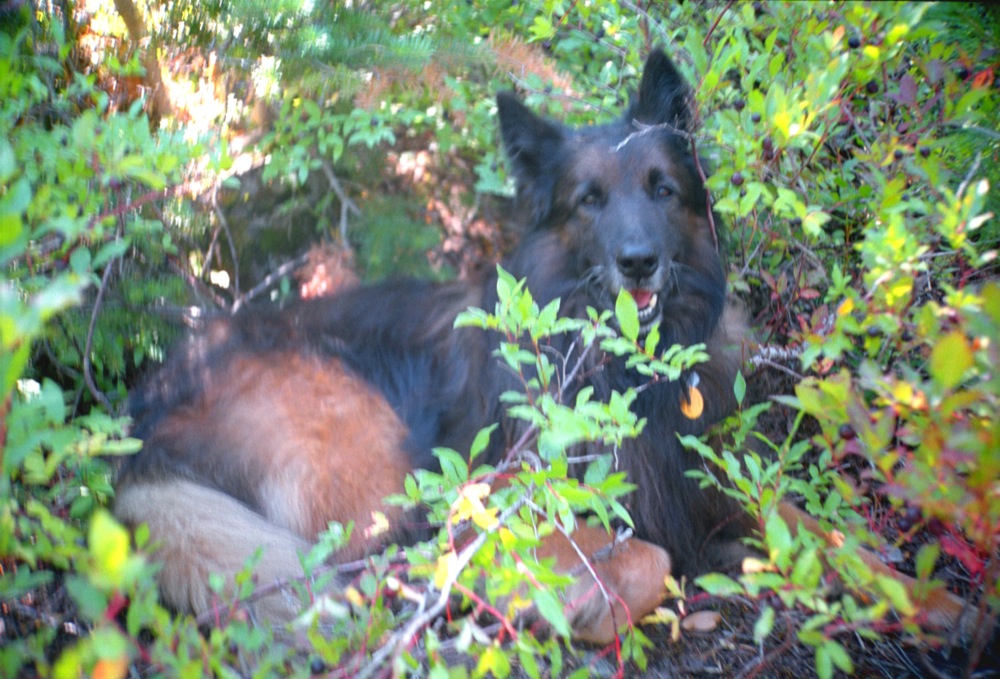
By the time he was 15, he was still able to accompany me on 5- and 6-mile hikes to pick huckleberries.
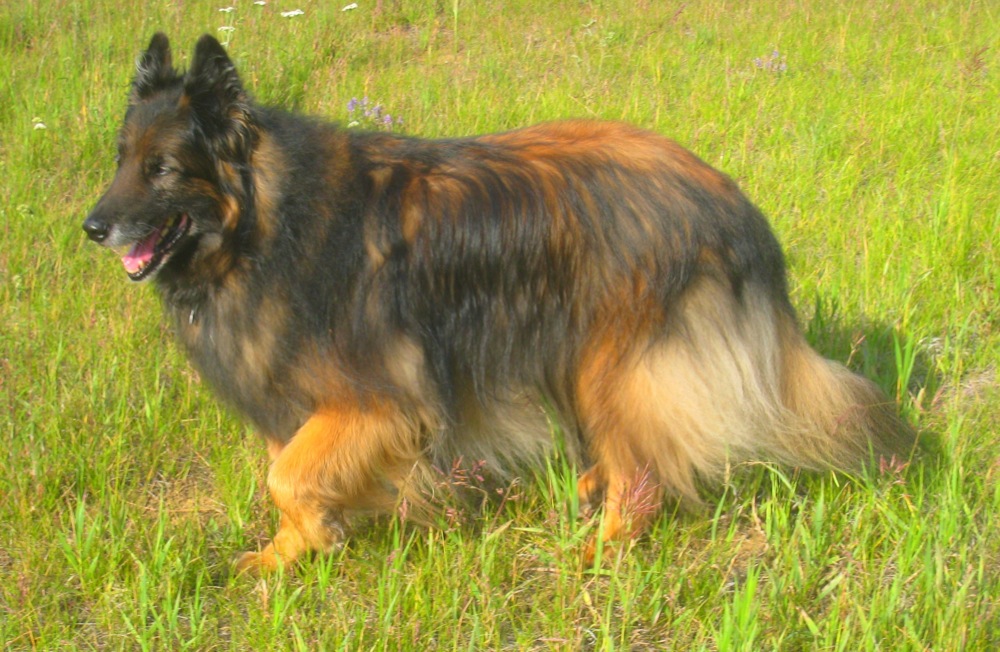
He began to seriously slow down when he was 16 (here on birthday in July 2009), but still joined us for shorter walks of a mile or so.
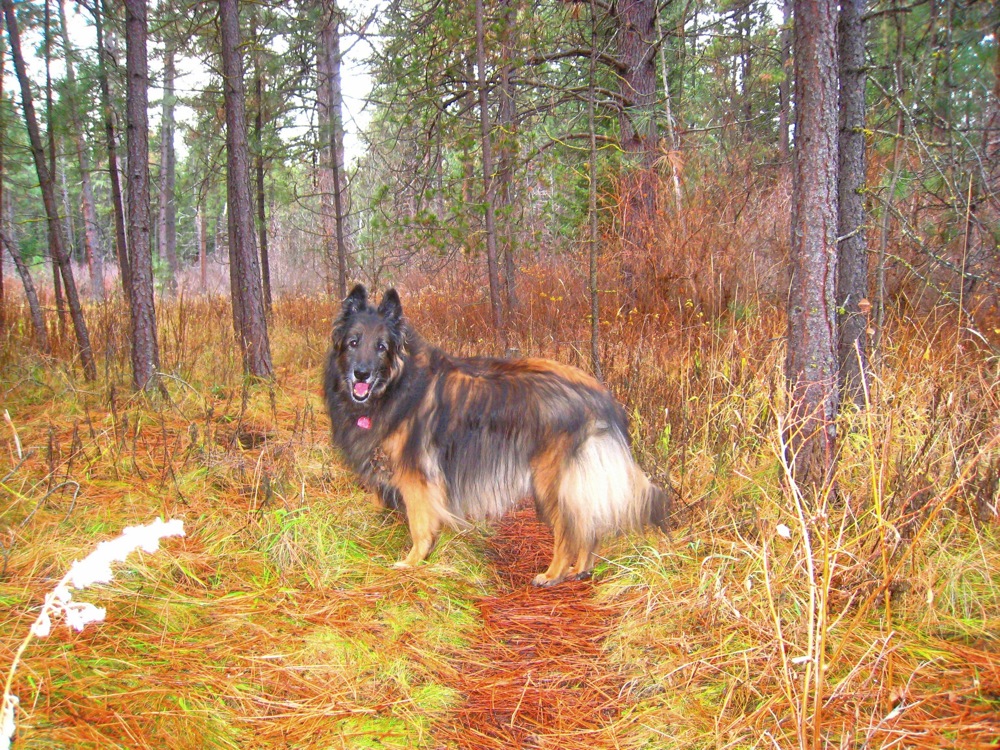
Here in November, 2009, Chip is on a hike along a creek near our home. I estimate that he went with us on some 25,000 miles of walks and hikes in his life. Of course, he probably went many more miles than we did.

The main thing slowing Chip down at this time was arthritis. This November 2009 photo shows what is probably the last time Chip sat down like a normal dog.
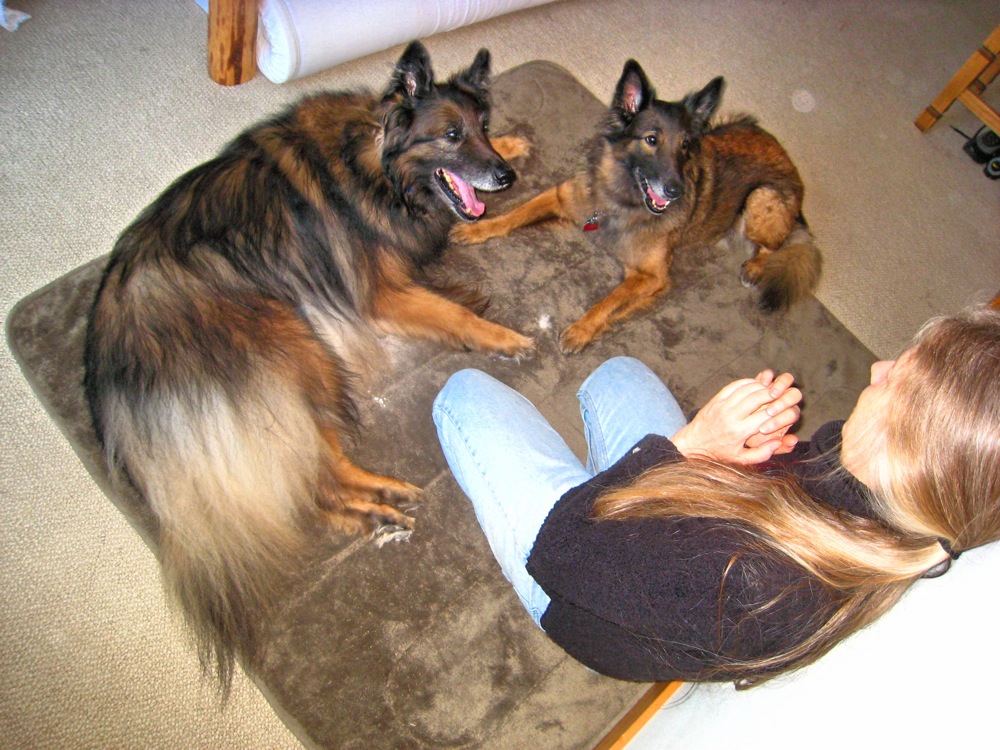
After this date, he mainly stood or lay down, as in this photo with Buffy and Vickie.
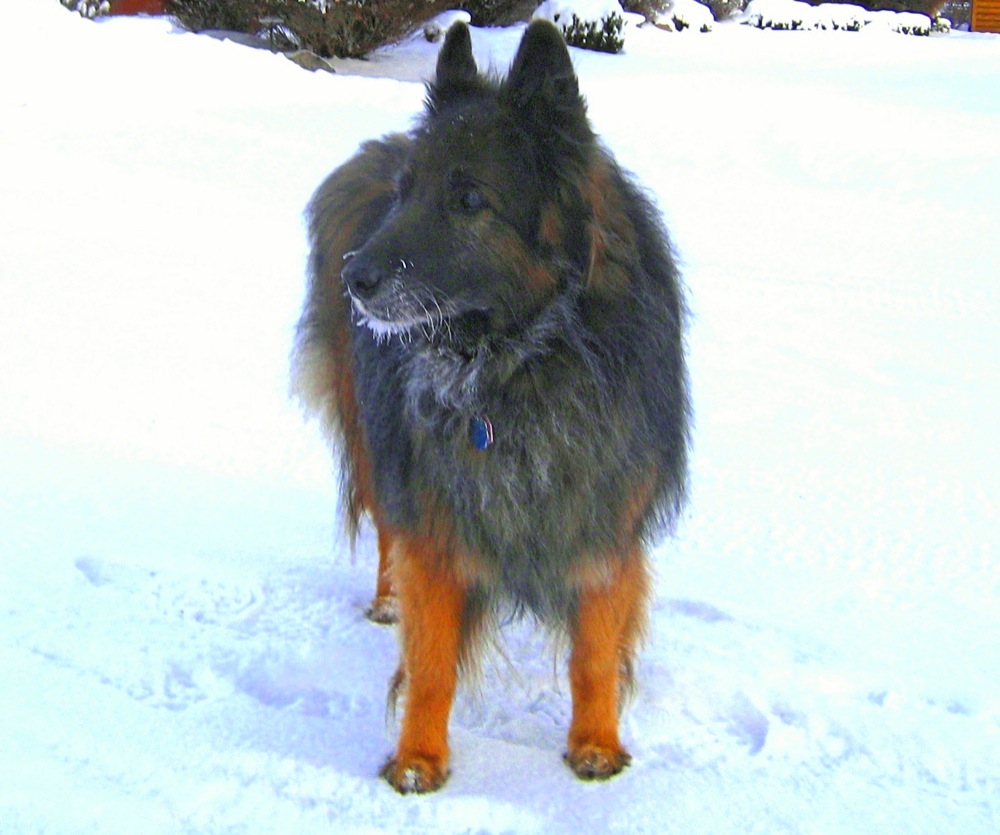
That December, temperatures got down to 16 below zero, but they didn't bother Chip.
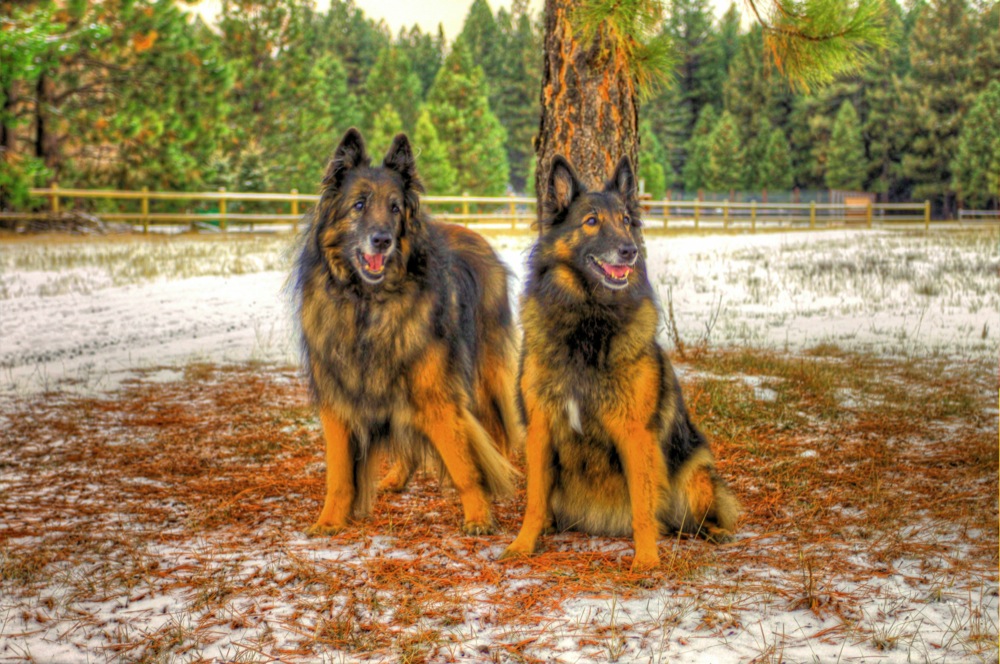
Because of their dark coats, Tervs are hard to photograph, especially in the snow. Here, in December 2009, is one of my first experiments with high-dynamic range (HDR) photography.
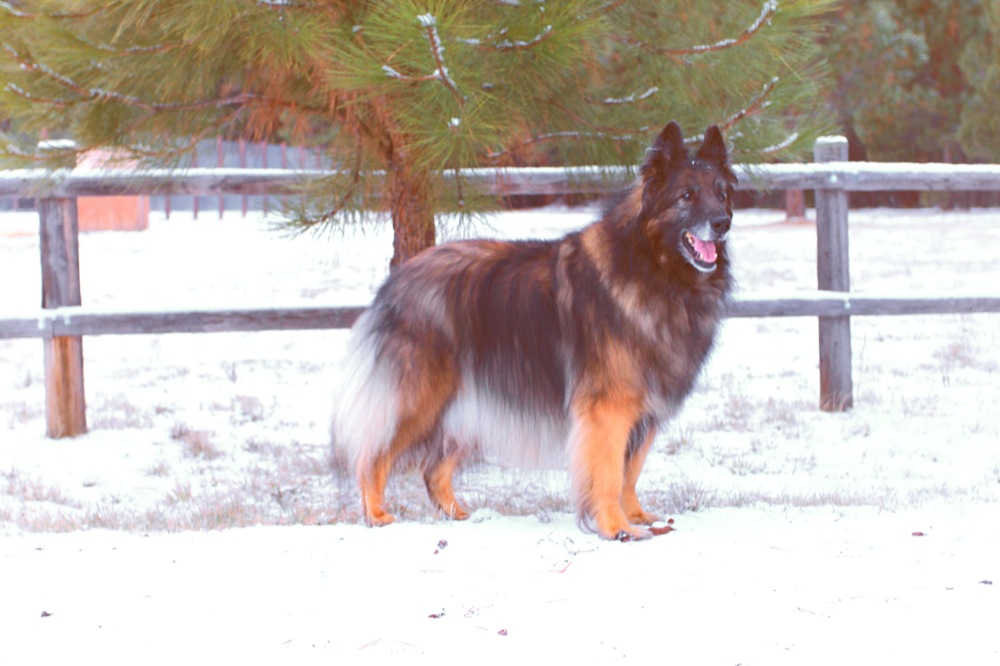
In his last year, Chip was nearly deaf and his eyesight was obstructed by cataracts. Yet he looks very spry in this HDR photo, probably taken on the same day as the previous one.
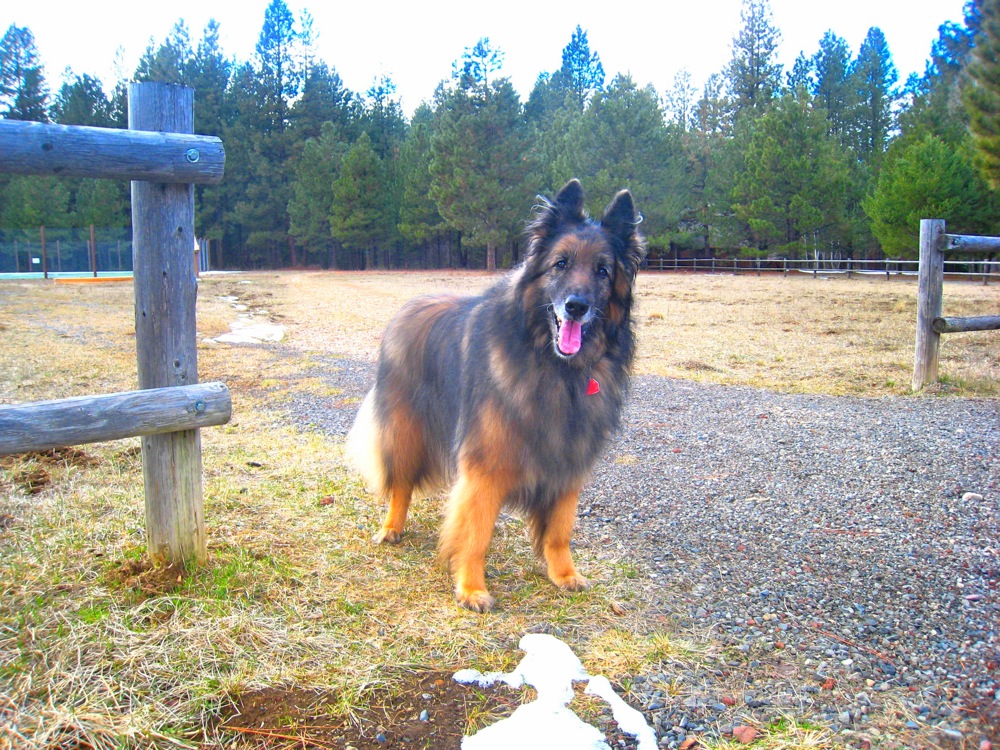
How do you know when to let go? He fell down a couple of times in early February, 2010, and we thought it was near the end. But he joined us for a nice walk around the neighborhood and everything seemed fine.
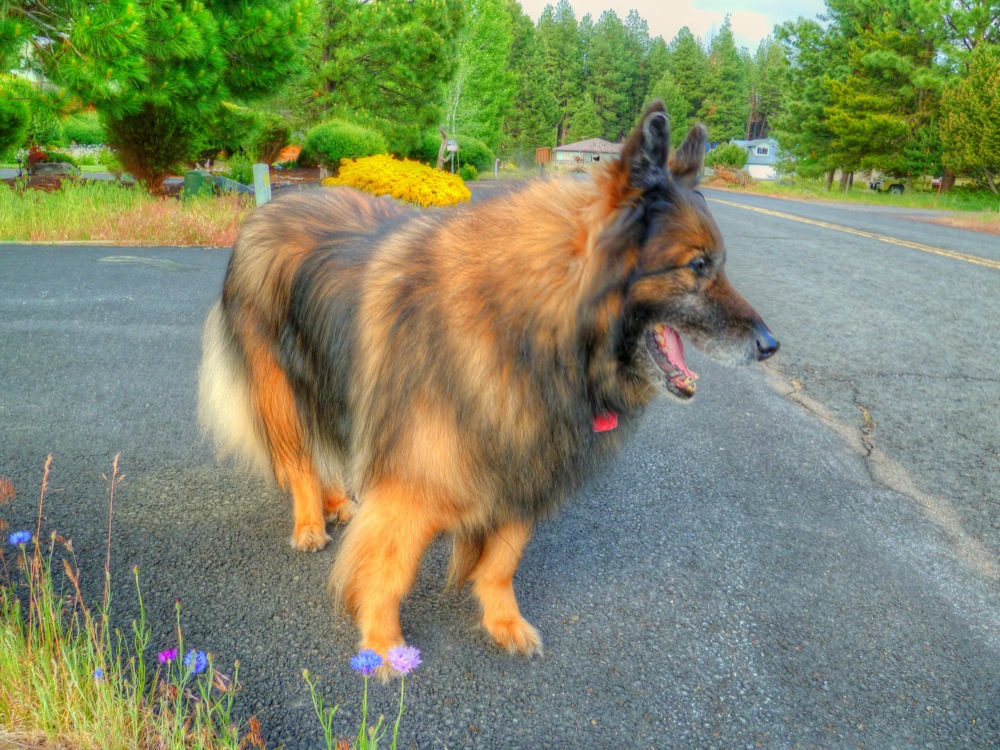
On his 17th birthday, Chip was still accompanying us on walks around the block (a bit more than a quarter mile), but he was increasingly reluctant to do so.
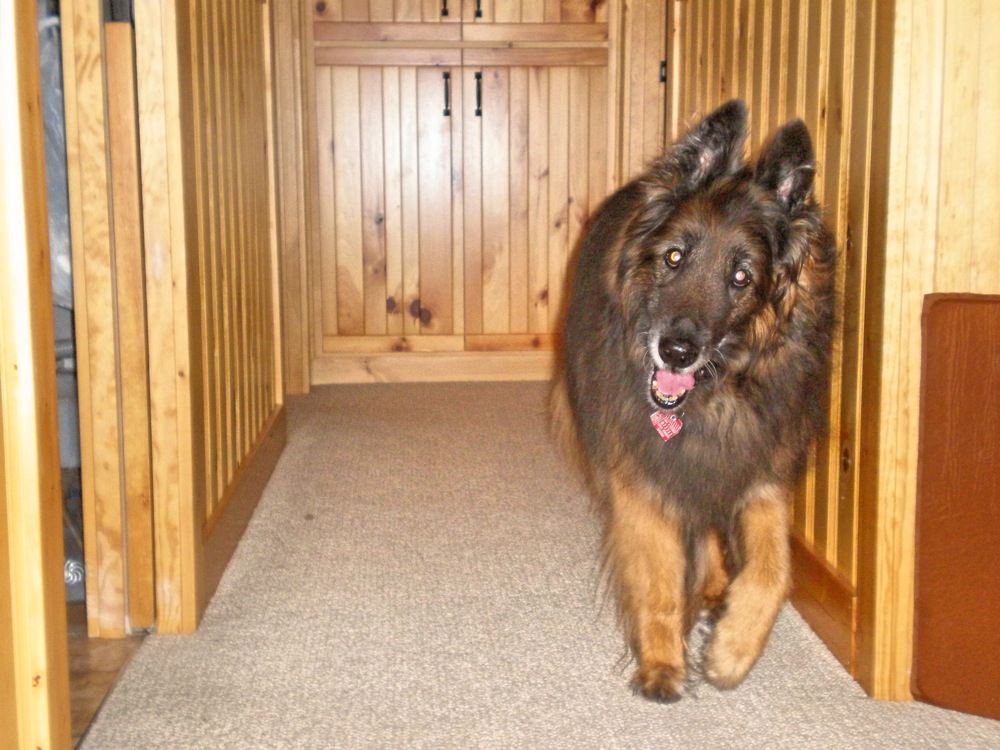
Indoors, he sometimes leaned against a wall to compensate for sore leg joints.
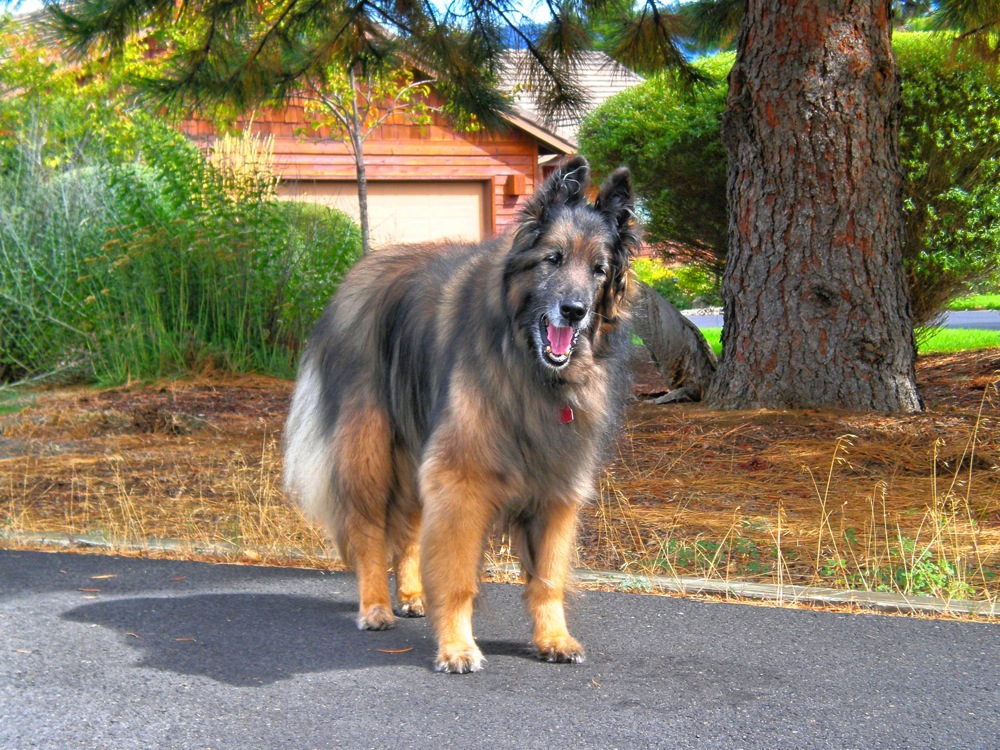
He looks fine, if a bit grey, in this photo taken in September, 2010. By this time, however, he would rarely go much beyond our yard.

In late September, someone said to me, "They'll tell you when it's time to go." He stopped eating after October 8, refusing all of his favorite foods and treats. He needed help standing up and help lying down. A few minutes after I took this photo of him on October 11, he flopped down in front of my chair and never got up again.
We took his body to the local humane society for cremation. It was a wrench to let him go--he had been with one or both of us almost every hour of every day for more than 17 years. The next day they gave us a very nice cedar box with his ashes. We have the box on the mantle above our woodstove, but I can't bear to look at it so it is "hidden" in an old shoe box.
Chip changed our lives in a thousand ways, all of them for the better. I miss him every day.